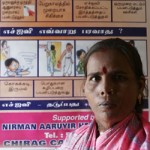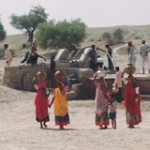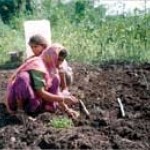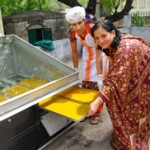
Sunita’s life began to change when she met an outreach worker from a USAID-funded non-government organization, NIRMAN, which promotes HIV/AIDS awareness among women working in construction. During the information session on HIV/AIDS prevention at Khar Naka in Mumbai, the outreach worker was able to provide Sunita with help and counseling.

For years, 400,000 residents breathed air highly polluted by emissions from the 50-year-old coal-fired power plant operated by Calcutta Electric Supply Corporation (CESC) - the largest private thermal power company in Eastern India. Before USAID helped revamp the plant, the city of Kolkata’s air pollution levels were among the highest in the world.

For villagers in the arid Marwar region of Rajasthan, India, decreasing groundwater levels and repeated droughts have destroyed traditional livelihoods. During the long dry season, farmers and herders get most of their water from wells. In recent years, some groundwater levels have dropped as much as 400 feet. One of the world's most densely populated arid regions, Marwar's droughts starve cattle and cause mass migration of people and their livestock. Farmers are forced to pay a high price for drinking water transported great distances by tankers, and many fall into debt taking out loans from local moneylenders.

Most of India's poorest people are subsistence farmers who have little or no access to new technology and markets for their produce. Access to water for irrigation is one of the most critical constraints that small farmers face, and in semi-arid regions like Maharashtra, small farmers struggle with scarce water resources and no access to irrigation technology that would allow them to enter high-value crop markets. Effective drip-irrigation systems have a high initial cost that most small farmers could not afford, leaving many unable to grow enough produce even to feed themselves and their families.

Saroja, a woman farmer from Sadrana village in the north Indian state of Haryana, grows fruits and vegetables. During harvest, she was forced either to sell the excess produce at low prices or let it spoil. Other farmers in the region and in the neighboring country of Nepal faced the same problem.








Comment
Make a general inquiry or suggest an improvement.